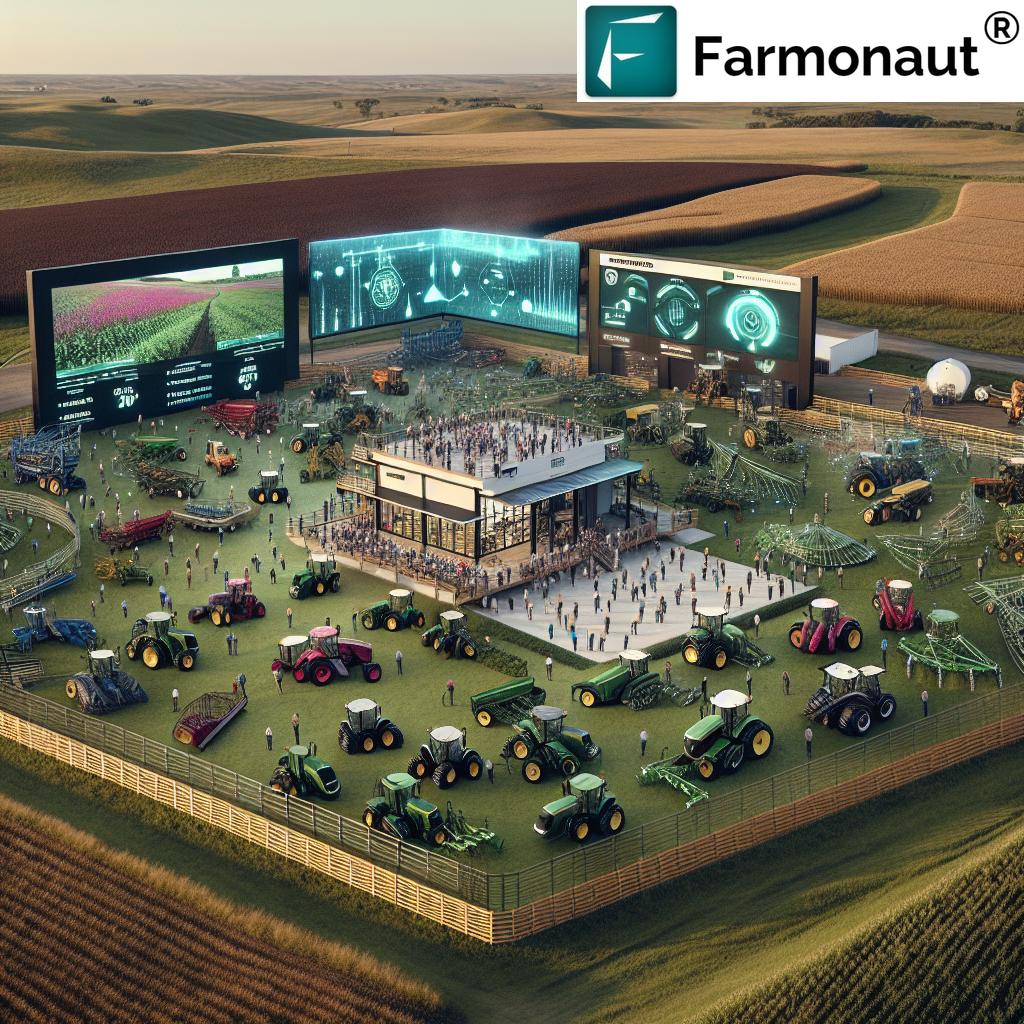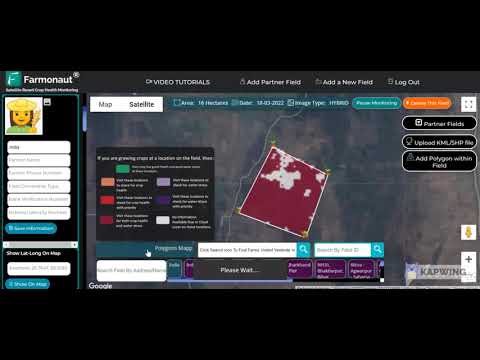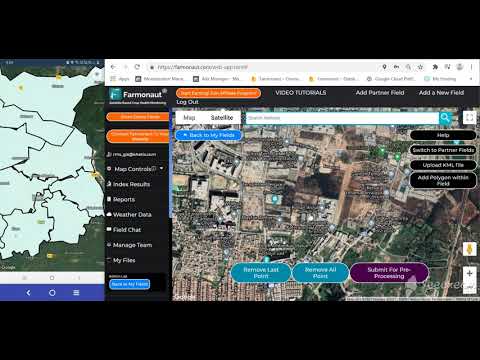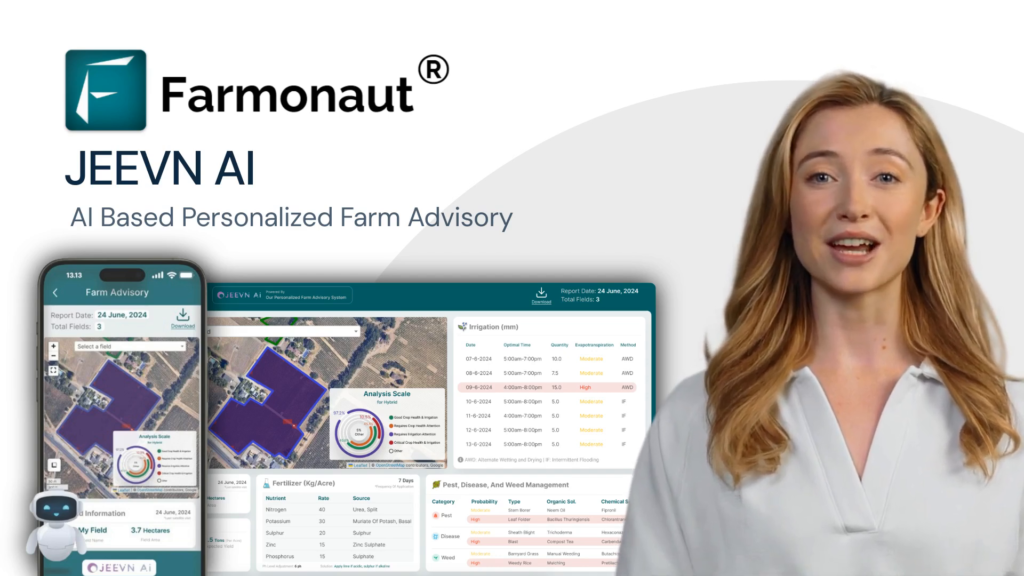2024 Midwest Farm Tech Revolution: Innovative Fencing Solutions Boost Livestock Management Efficiency
“In 2024, innovative fencing solutions are being adopted across 7 Midwest states, from Montana to Iowa, revolutionizing livestock management.”
Welcome to the future of farming in the Midwest! As we dive into 2024, we’re witnessing a remarkable transformation in agricultural practices, particularly in the realm of livestock management and crop protection. At the heart of this revolution are innovative agricultural fencing solutions that are reshaping the landscape of efficient farming operations across states like Illinois, Iowa, Kansas, and Missouri. In this comprehensive guide, we’ll explore how cutting-edge technology is empowering farmers and ranchers to optimize their land use, protect their investments, and boost productivity like never before.
The Evolution of Agricultural Fencing in the Midwest
Traditional fencing has long been a staple in farming and ranching operations. However, as we step into 2024, the game is changing rapidly. Advanced fencing technologies are not just about keeping livestock in and predators out; they’re becoming integral components of smart farm management systems. Let’s take a closer look at how these innovations are transforming the agricultural sector:
- Smart Electric Fencing: Equipped with sensors and connectivity features, these fences can alert farmers to breaches in real-time.
- GPS-Enabled Virtual Fencing: Using collar devices on livestock, farmers can create invisible boundaries without physical barriers.
- Solar-Powered Systems: Sustainable and cost-effective, these fences harness solar energy to power electric fencing in remote locations.
- Biodegradable Fencing Materials: Environmentally friendly options that reduce long-term ecological impact.
These advancements are not just theoretical; they’re being implemented across the Midwest, from the cattle ranches of Montana to the diverse agricultural lands of Iowa and Illinois. The impact on farm efficiency and livestock management is profound, offering solutions that are both innovative and practical for modern agricultural challenges.
Revolutionizing Livestock Management with High-Tech Fencing
In the heart of America’s breadbasket, livestock management is undergoing a technological renaissance. The integration of advanced fencing solutions with farm equipment and supplies is creating a synergy that’s boosting efficiency and productivity. Here’s how innovative fencing is transforming livestock operations:
- Precision Grazing: GPS-enabled virtual fencing allows for precise control over grazing patterns, optimizing pasture use and reducing overgrazing.
- Real-Time Monitoring: Smart fences connected to mobile apps provide instant alerts about fence integrity and animal locations.
- Adaptive Boundaries: Farmers can easily adjust fence lines remotely, adapting to changing weather conditions or rotational grazing needs.
- Integration with Farm Management Systems: Fencing data can be incorporated into broader farm management software, offering comprehensive insights.
These advancements are particularly impactful in states like Kansas and Missouri, where diverse farming operations benefit from flexible and intelligent fencing solutions. The ability to manage large herds efficiently across vast tracts of land is revolutionizing how we approach cattle, dairy, and even swine production in the Midwest.

Crop Protection and Property Boundary Control: A New Era
It’s not just livestock that benefits from these innovative fencing solutions. Crop protection and property boundary control are equally transformed by these technological advancements. In 2024, Midwest farmers are leveraging these tools to safeguard their investments in crops like corn, soybeans, and wheat. Here’s how:
- Integrated Pest Management: Smart fences can be equipped with sensors to detect and deter pests, protecting valuable crops.
- Weather-Responsive Systems: Fences that automatically adjust based on weather forecasts, providing extra protection during severe conditions.
- Clear Boundary Delineation: GPS-enabled fencing helps in accurately marking and maintaining property lines, reducing disputes.
- Data-Driven Decision Making: Fencing systems integrated with farm management software provide valuable data for crop rotation and land use planning.
These innovations are particularly crucial in states like Illinois and Iowa, where prime agricultural land demands precise management and protection. By incorporating these advanced fencing solutions, farmers are not only protecting their crops but also optimizing their land use for maximum productivity.
The Role of Tractor and Combine Dealers in the Fencing Revolution
As we embrace these innovative fencing solutions, the role of tractor and combine dealers across the Midwest is evolving. These dealers are no longer just suppliers of traditional farm equipment; they’re becoming hubs of technological innovation. In 2024, we’re seeing a trend where dealers are offering comprehensive packages that include:
- Smart fencing systems compatible with the latest tractors and combines
- Training programs for farmers on integrating fencing technology with existing equipment
- Maintenance services for high-tech fencing solutions
- Consultation on optimizing farm layouts using advanced fencing and equipment
This shift is particularly noticeable in agricultural hubs like Webster, ND, and Belgrade, MT, where dealers are adapting to meet the changing needs of modern farmers. The synergy between advanced fencing solutions and state-of-the-art farm equipment is creating unprecedented opportunities for efficient farming operations.
Agricultural Land Management: A Holistic Approach
In 2024, agricultural land management in the Midwest is taking a more holistic approach, with innovative fencing at its core. This new paradigm integrates various aspects of farm management:
- Soil Conservation: Smart fencing helps in implementing effective soil conservation practices by controlling livestock movement and preventing overgrazing.
- Water Management: Fencing systems are being used to protect water sources and implement efficient irrigation strategies.
- Biodiversity Preservation: Advanced fencing allows for the creation of protected areas within farms, promoting biodiversity.
- Climate-Smart Agriculture: Fencing plays a role in implementing climate-adaptive farming techniques, crucial in the face of changing weather patterns in the Midwest.
This comprehensive approach to land management is particularly important in states like Missouri and Kansas, where diverse landscapes require tailored solutions. By leveraging innovative fencing technologies, farmers are not just managing their land more effectively; they’re also contributing to more sustainable and resilient agricultural practices.
“Advanced agricultural fencing technology is transforming crop protection and property boundary control across 5 key farming sectors in the Midwest.”
The Impact on Farm Business Practices
The adoption of innovative fencing solutions is having a profound impact on farm business practices across the Midwest. In 2024, we’re seeing a shift in how farmers approach various aspects of their operations:
- Cost Management: While initial investment in high-tech fencing might be higher, the long-term savings in labor and resources are significant.
- Risk Mitigation: Advanced fencing systems reduce the risk of livestock loss and crop damage, providing better security for farm investments.
- Efficiency Gains: Automated and remote-controlled fencing allows farmers to manage larger areas with less manpower.
- Data-Driven Decision Making: Integration with farm management software provides valuable insights for strategic planning.
These changes are particularly evident in states like Illinois and Iowa, where large-scale farming operations are leveraging technology to stay competitive in global markets. The ability to manage resources more effectively is not just improving profitability; it’s also enhancing the sustainability of farming practices.

Agricultural Equipment Listings: What’s Hot in 2024
As we delve into the world of agricultural equipment listings in 2024, it’s clear that fencing technology is taking center stage alongside traditional farm machinery. Here’s what’s trending in the Midwest:
- Smart Fence Controllers: Compatible with existing fencing, these devices add intelligence to traditional setups.
- GPS-Enabled Livestock Collars: Essential for virtual fencing systems, these are becoming standard in cattle operations.
- Solar-Powered Fence Energizers: High-demand items for remote and eco-conscious farming operations.
- Integrated Fence Monitoring Systems: Often bundled with farm management software packages.
- Automated Gate Systems: Enhancing security and efficiency in livestock management.
These listings are particularly popular in states like Montana and North Dakota, where vast ranches and farms require robust and innovative fencing solutions. The integration of these technologies with traditional farm equipment is creating a new ecosystem of smart farming tools.
Weather Resilience: Fencing for the Midwest Climate
In the Midwest, where weather conditions can be extreme and unpredictable, innovative fencing solutions are playing a crucial role in enhancing farm resilience. The 2024 fencing technologies are designed to withstand the diverse climate challenges of the region:
- Extreme Temperature Resistance: Materials that can withstand both frigid winters and scorching summers.
- Flood-Resistant Designs: Fencing systems that can endure high water levels, crucial for areas prone to flooding.
- Wind-Resistant Structures: Engineered to withstand high winds common in plains states.
- Adaptable Configurations: Fencing that can be quickly reconfigured in response to severe weather warnings.
These weather-resilient fencing solutions are particularly valuable in states like Kansas and Missouri, where farmers often contend with a wide range of weather challenges. By investing in these technologies, farmers are not just protecting their livestock and crops; they’re also ensuring business continuity in the face of climate uncertainties.
The Future of Farming: Integration with Precision Agriculture
As we look to the future of farming in the Midwest, it’s clear that innovative fencing solutions are becoming an integral part of the broader precision agriculture movement. In 2024, we’re seeing exciting developments in how fencing technology integrates with other smart farming practices:
- Drone Integration: Use of drones for fence inspection and livestock monitoring, complementing ground-based systems.
- AI-Powered Decision Making: Fencing systems that use artificial intelligence to optimize livestock movement and grazing patterns.
- IoT Ecosystem: Fences as part of a broader Internet of Things network on the farm, providing comprehensive data for farm management.
- Predictive Maintenance: AI systems that can predict fence failures before they occur, reducing downtime and livestock escapes.
These advancements are particularly exciting for states like Illinois and Iowa, where large-scale farming operations can benefit significantly from integrated, data-driven approaches to agriculture. The synergy between innovative fencing and other precision agriculture technologies is paving the way for a new era of smart farming in the Midwest.
Comparative Analysis: Innovative Fencing Solutions
To help farmers make informed decisions about their fencing investments, we’ve compiled a comprehensive comparison of various fencing solutions available in 2024. This table provides key insights into the costs, benefits, and characteristics of different fencing technologies:
| Fencing Type | Installation Cost ($/acre) | Maintenance Requirements | Livestock Containment Effectiveness (%) | Integration with Farm Management Systems | Energy Efficiency Rating (1-5 stars) | Weather Resistance | Estimated Lifespan (years) |
|---|---|---|---|---|---|---|---|
| Traditional Barbed Wire | $1,000 | High | 85% | No | ★☆☆☆☆ | Medium | 15-20 |
| Smart Electric Fencing | $2,500 | Low | 98% | Yes | ★★★★☆ | High | 25-30 |
| GPS Virtual Fencing | $3,000 | Low | 95% | Yes | ★★★★★ | High | 10-15 (hardware) |
| Solar-Powered Electric Fence | $2,200 | Medium | 97% | Yes | ★★★★★ | High | 20-25 |
| High-Tensile Wire Fencing | $1,800 | Medium | 90% | No | ★★★☆☆ | High | 30-40 |
This comparison clearly demonstrates the advantages of innovative fencing solutions in terms of effectiveness, integration capabilities, and long-term value. While the initial investment for advanced fencing technologies may be higher, the benefits in terms of reduced maintenance, improved livestock management, and integration with farm management systems offer significant long-term advantages for Midwest farmers.
Leveraging Technology for Enhanced Farm Management
In the rapidly evolving landscape of Midwest agriculture, leveraging technology for enhanced farm management is crucial. This is where platforms like Farmonaut come into play, offering advanced, satellite-based farm management solutions that complement innovative fencing technologies. Here’s how farmers can utilize these tools:
- Real-Time Crop Health Monitoring: Use satellite imagery to assess vegetation health and make informed decisions about resource allocation.
- AI-Powered Advisory Systems: Get personalized recommendations for crop management, integrating data from fencing systems and satellite imagery.
- Blockchain-Based Traceability: Ensure transparency in your supply chain, from farm to consumer, enhancing trust and reducing fraud.
- Resource Management Tools: Optimize the use of water, fertilizers, and other resources based on precise data and analytics.
By combining innovative fencing solutions with advanced farm management platforms, Midwest farmers can take their operations to the next level of efficiency and productivity. These integrated approaches are particularly valuable in states like Illinois, Iowa, and Kansas, where large-scale farming operations require sophisticated management tools.
To explore how Farmonaut can enhance your farm management strategies alongside innovative fencing solutions, check out their services:
For developers interested in integrating Farmonaut’s powerful satellite and weather data into their own systems, explore the API and API Developer Docs.
The Economic Impact of Innovative Fencing in the Midwest
The adoption of innovative fencing solutions is having a significant economic impact on Midwest agriculture. In 2024, we’re seeing several key trends:
- Increased Productivity: Efficient livestock management and crop protection are leading to higher yields and better quality products.
- Cost Savings: While initial investments may be higher, long-term savings in labor and resources are substantial.
- New Job Creation: The need for technicians skilled in installing and maintaining high-tech fencing systems is creating new employment opportunities.
- Market Competitiveness: Farms adopting these technologies are gaining a competitive edge in both domestic and international markets.
This economic boost is particularly noticeable in states like Iowa and Illinois, where large-scale farming operations are seeing significant returns on their investments in innovative fencing technologies. The ripple effect is benefiting the entire agricultural ecosystem, from equipment suppliers to food processors.
Environmental Benefits of Smart Fencing Solutions
As we embrace innovative fencing technologies in 2024, it’s important to highlight the environmental benefits these solutions bring to Midwest agriculture:
- Reduced Soil Erosion: Precise livestock management prevents overgrazing and helps maintain soil integrity.
- Water Conservation: Smart fencing can protect water sources and aid in efficient water management strategies.
- Wildlife Protection: Advanced fencing allows for the creation of wildlife corridors and protected habitats within farmlands.
- Lower Carbon Footprint: Energy-efficient fencing systems, especially solar-powered options, contribute to reducing the farm’s overall carbon emissions.
These environmental advantages are particularly significant in states like Missouri and Kansas, where diverse ecosystems intersect with agricultural lands. By adopting these eco-friendly fencing solutions, Midwest farmers are not just improving their operations; they’re also contributing to the long-term sustainability of the region’s natural resources.
Looking Ahead: The Future of Midwest Farming
As we conclude our exploration of innovative fencing solutions in 2024, it’s clear that the future of Midwest farming is bright and technologically advanced. The integration of smart fencing with other precision agriculture technologies is setting the stage for a new era of efficient, sustainable, and profitable farming. Here’s what we can expect in the coming years:
- Further Integration of AI and Machine Learning: Fencing systems will become even smarter, adapting to farm needs in real-time.
- Increased Focus on Sustainability: Future innovations will emphasize eco-friendly materials and energy-efficient designs.
- Greater Customization: Fencing solutions will become more tailored to specific farm types and regional needs.
- Enhanced Data Analytics: The integration of fencing data with broader farm management systems will provide even more valuable insights for decision-making.
For Midwest farmers looking to stay ahead of the curve, investing in these innovative fencing solutions and complementary technologies like Farmonaut’s satellite-based farm management tools is crucial. By embracing these advancements, farmers across Illinois, Iowa, Kansas, Missouri, and beyond can ensure their operations remain competitive, efficient, and sustainable in the ever-evolving world of agriculture.
Frequently Asked Questions
- Q: How do innovative fencing solutions improve livestock management?
A: Innovative fencing solutions, such as GPS-enabled virtual fences and smart electric fencing, provide real-time monitoring of livestock location, allow for remote control of grazing areas, and offer instant alerts for breaches or animal health issues. This leads to more efficient use of pastures, reduced labor costs, and improved animal welfare. - Q: Are these new fencing technologies cost-effective for small farms?
A: While the initial investment may be higher than traditional fencing, many innovative solutions offer long-term cost savings through reduced maintenance, improved livestock management, and integration with other farm management systems. Small farms can often start with modular systems and scale up as needed. - Q: How do weather-resistant fences perform in extreme Midwest conditions?
A: Modern weather-resistant fences are designed to withstand extreme temperatures, high winds, and heavy precipitation common in the Midwest. They use durable materials and smart designs that can flex or adapt to changing weather conditions, ensuring longevity and reliability. - Q: Can these fencing solutions integrate with existing farm management software?
A: Yes, many innovative fencing solutions are designed to integrate seamlessly with popular farm management software platforms. This integration allows for comprehensive data analysis, combining fencing data with other farm metrics for improved decision-making. - Q: What training is required to operate and maintain these high-tech fencing systems?
A: Most suppliers offer training programs for farmers and farm staff. The level of training required varies depending on the complexity of the system but generally includes basic operation, troubleshooting, and maintenance procedures. Many systems also come with user-friendly interfaces and remote support options.
In conclusion, the 2024 Midwest Farm Tech Revolution, driven by innovative fencing solutions, is transforming livestock management and crop protection across the region. From Montana to Iowa, farmers are embracing these advanced technologies to boost efficiency, sustainability, and profitability. By integrating smart fencing with comprehensive farm management tools like Farmonaut, Midwest farmers are well-positioned to lead the way in modern, technology-driven agriculture. As we look to the future, it’s clear that these innovative solutions will continue to play a crucial role in shaping the landscape of farming in America’s heartland.



















